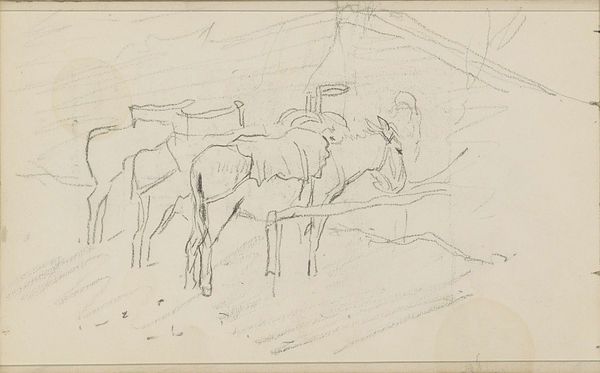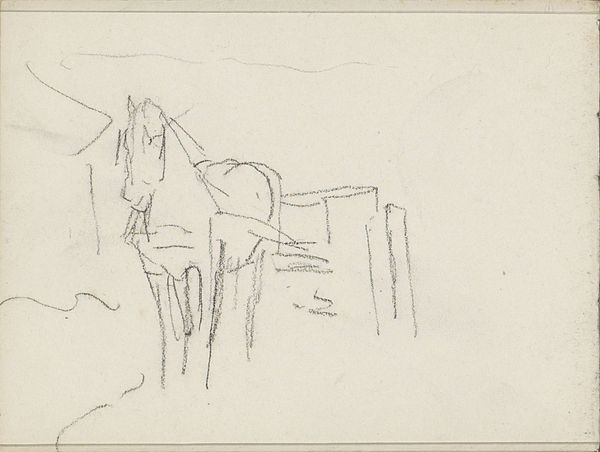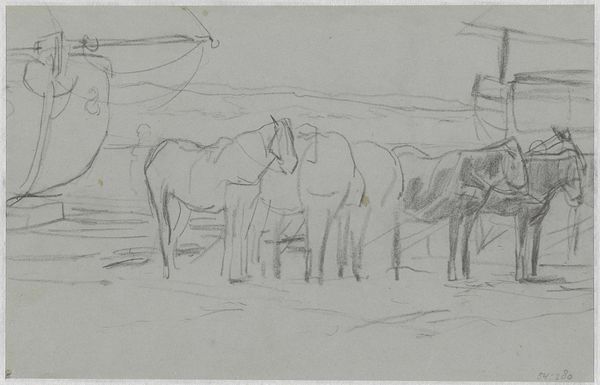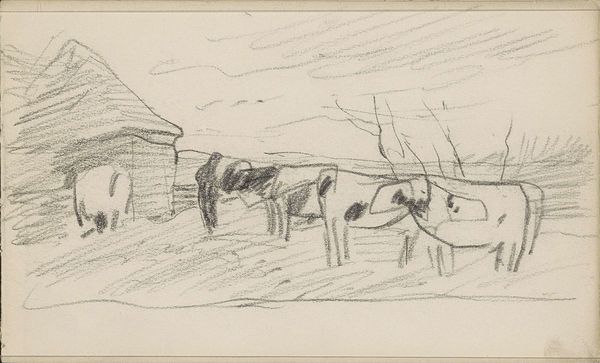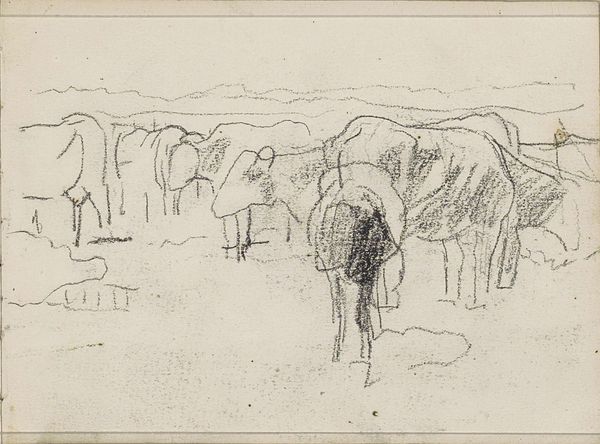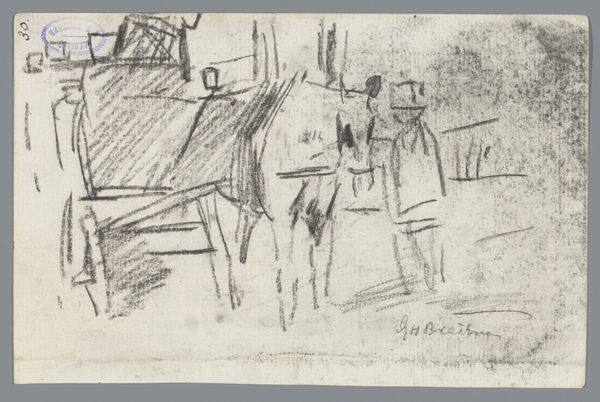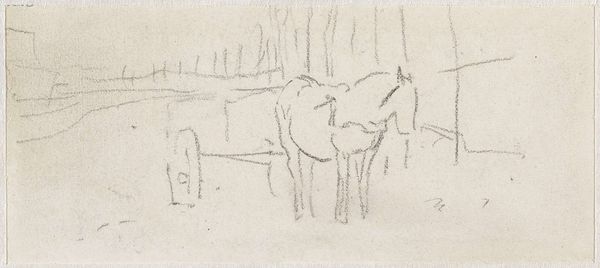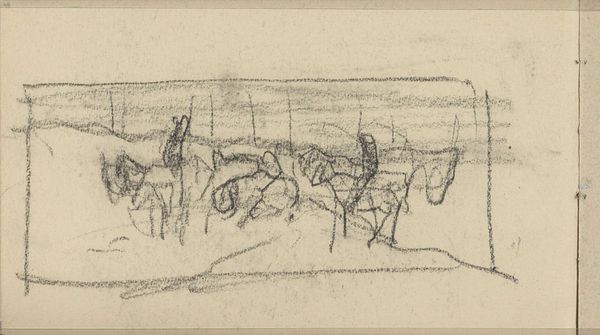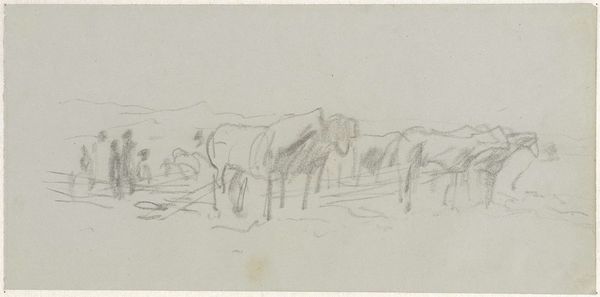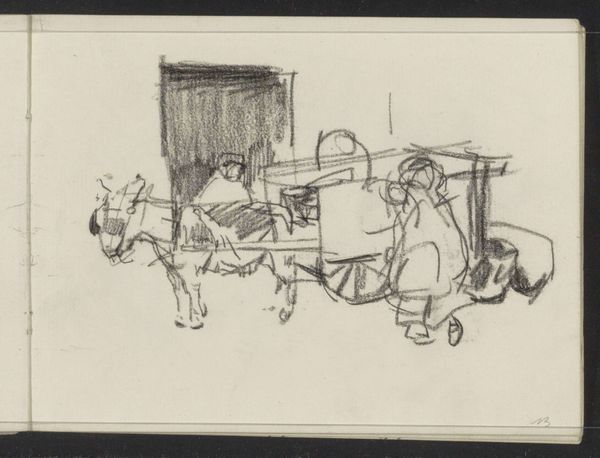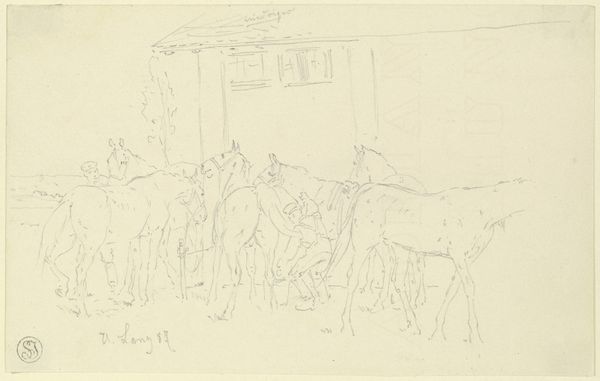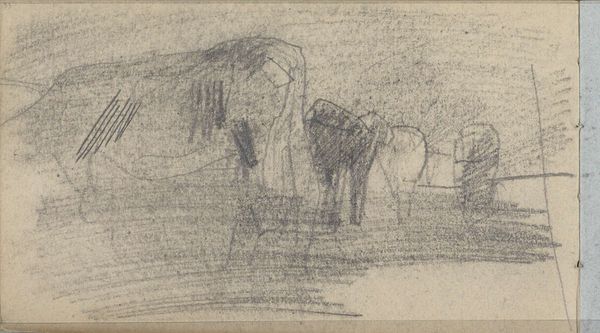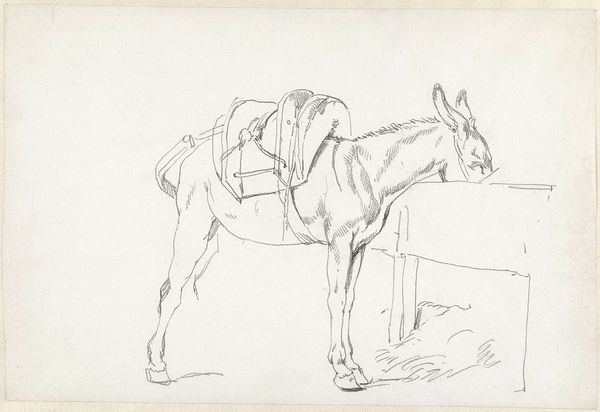
drawing, pencil
#
drawing
#
dutch-golden-age
#
landscape
#
pencil
#
realism
Copyright: Rijks Museum: Open Domain
Editor: This is "Animals at a Feeding Place," a pencil drawing by Anton Mauve, created sometime between 1848 and 1888. It's currently at the Rijksmuseum. The composition feels quite sparse, almost skeletal, with these animals only suggested by a few lines. What stands out to you? Curator: What captures my attention is the economical use of line to define form. Note how Mauve creates depth through subtle variations in line weight, suggesting the animals receding into the background. Consider, also, the compositional strategy; the artist deliberately crops the scene, framing the subject and drawing attention to the interplay between positive and negative space. How do you interpret that deliberate act of framing? Editor: I guess it emphasizes the flatness of the drawing. It makes me more aware of the surface itself, rather than getting lost in an illusion of depth. It's also interesting how much information is conveyed with so few strokes. Curator: Precisely. Observe how the textures are evoked through varied mark-making. The dense, hatching in the background contrasts with the smoother lines delineating the animals. This generates a visual tension, heightening the sense of depth and surface simultaneously. Does this reinforce the tension that you observed earlier, based on flatness? Editor: Yes, definitely. It’s like he’s playing with the idea of representation itself. He’s not trying to trick us into thinking this *is* a feeding place; he's reminding us that it's a drawing *of* one. Curator: I find your semiotic interpretation to be astute. It highlights the inherent qualities of the medium itself – the drawing, rather than a mimetic representation. Editor: That's a very helpful observation about mark-making and composition. It definitely shifted my perception of the piece. Curator: And your initial reading was a keen demonstration of the capacity for drawings like this to act as propositions on how visual art carries its own form of information.
Comments
No comments
Be the first to comment and join the conversation on the ultimate creative platform.
